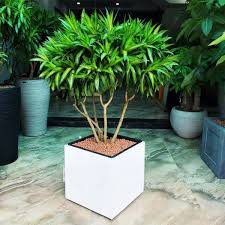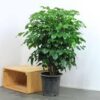The Art of Mother-of-Pearl Inlay in Furniture: A Timeless Craft
Mother-of-pearl inlay is an exquisite and timeless art form that has adorned furniture and decorative objects for centuries. Known for its lustrous sheen and iridescent beauty, mother-of-pearl inlay transforms furniture pieces into stunning works of art, adding depth, elegance, and richness to their appearance. This intricate craft, involving the embedding of mother-of-pearl into wood or other materials, has been cherished by various cultures around the world, from the royal courts of Asia to the opulent homes of Europe. In this article, we explore the history, techniques, and cultural significance of mother-of-pearl inlay in furniture, highlighting its enduring appeal in modern interior design.
1. The History of Mother-of-Pearl Inlay in Furniture
Mother-of-pearl, or “nacre,” is a natural material formed by mollusks such as oysters, abalone, and mussels. Its iridescent quality, produced by the layers of aragonite and conchiolin, has made it a prized material for decorative purposes for thousands of years. The art of inlaying mother-of-pearl into furniture and other objects can be traced back to ancient civilizations, with its use flourishing in different parts of the world over time.
a) Ancient Origins: The Beginnings of Inlay Art
The use of mother-of-pearl for decoration dates back to ancient Egypt, where it was used in the creation of jewelry, cosmetic boxes, and royal thrones. The Egyptians, renowned for their craftsmanship, would set mother-of-pearl into intricate designs to add both color and texture to their objects. This technique spread to other ancient cultures, such as Mesopotamia and Persia, where it was used in both everyday items and luxury artifacts.
b) The Flourishing of Mother-of-Pearl Inlay in Asia
The art of mother-of-pearl inlay reached its peak in Asia, particularly in China, Japan, and Korea. In these cultures, mother-of-pearl was highly valued for its association with purity, beauty, and the natural world. In China, it was used extensively in the decoration of furniture, cabinets, and screens, with artisans skillfully embedding pieces of mother-of-pearl into lacquered surfaces.
In Japan, the craft of mother-of-pearl inlay became a significant part of the lacquerware tradition, particularly in the production of ornamental boxes, trays, and folding screens. The Japanese also used mother-of-pearl to create intricate motifs of nature, including birds, flowers, and landscapes, which were meticulously inlaid into wooden surfaces.
c) European Influence and the Rise of Rococo
In the 18th century, the art of mother-of-pearl inlay made its way to Europe, where it was embraced by royal courts and aristocratic families. During the Rococo period, a style characterized by elegance, ornate designs, and opulence, mother-of-pearl inlay was used extensively in the decoration of furniture and interior objects. In France, for example, master furniture makers and craftsmen incorporated mother-of-pearl inlay into luxury pieces, such as writing desks, cabinets, and mirrors, often combining it with other materials like gilt bronze and marble.
2. Techniques of Mother-of-Pearl Inlay in Furniture
The process of creating mother-of-pearl inlay is intricate and requires great skill, precision, and patience. The artisans must carefully select the pieces of mother-of-pearl, cut them into specific shapes, and inlay them into the surface of the furniture. The art of mother-of-pearl inlay involves several important steps, which include the preparation of the wood, the cutting and fitting of the inlay pieces, and the finishing of the piece to enhance its luster.
a) Selecting and Preparing the Wood
The first step in the process is selecting a piece of wood that is suitable for inlay work. Hardwoods such as rosewood, mahogany, or ebony are often preferred due to their durability and smooth texture. The wood surface is then meticulously sanded and prepared to receive the inlay. Any imperfections or irregularities must be smoothed out to ensure a flawless surface for the mother-of-pearl to be set into.
b) Cutting the Mother-of-Pearl
Mother-of-pearl is typically harvested from mollusks and then sliced into thin, flat pieces. These pieces are then carefully cut into the desired shapes and sizes using fine tools, such as a jeweler’s saw. The pieces of mother-of-pearl are often irregular in shape, so the artisan must have a keen eye for detail to ensure that each piece fits perfectly into the design. Depending on the complexity of the design, several layers of mother-of-pearl may be used to create depth and texture.
c) Inlaying the Pieces into the Wood
Once the mother-of-pearl pieces have been cut, they are carefully set into the wooden surface. This involves creating small, precise cavities in the wood to hold the pieces of mother-of-pearl. The pieces are then glued into place using a strong adhesive, and any excess material is trimmed off to ensure a smooth, seamless finish. This process requires a steady hand and great attention to detail, as the pieces of mother-of-pearl must fit perfectly into the design.
d) Finishing and Polishing the Piece
After the inlay work is complete, the furniture piece is carefully finished and polished to bring out the natural sheen of the mother-of-pearl. The artisan uses a fine polishing cloth or a buffing wheel to smooth the surface and enhance the iridescent quality of the mother-of-pearl. This step is crucial, as it brings out the full beauty of the inlay, making the piece glow with a soft, luminous light.
3. Cultural Significance of Mother-of-Pearl Inlay in Furniture
Mother-of-pearl inlay is more than just an aesthetic technique—it is deeply imbued with cultural and symbolic significance. Different cultures have imbued the material with meanings that reflect their values, beliefs, and relationship with nature.
a) Symbolism of Purity and Elegance
In many cultures, mother-of-pearl is associated with purity, elegance, and refinement. Its soft, glowing light symbolizes the natural beauty of the ocean and the treasures it holds. In China and Japan, mother-of-pearl inlay is often used to represent themes of nature, such as flowers, birds, and animals, which are deeply intertwined with the cultural and spiritual beliefs of these societies. The use of mother-of-pearl in these contexts reflects the belief that beauty and nature are sacred and should be honored in art and design.
b) Royalty and Prestige
Throughout history, mother-of-pearl inlay has been a symbol of wealth, power, and prestige. In royal courts and aristocratic homes, furniture adorned with mother-of-pearl inlay was a mark of social standing and opulence. Kings, emperors, and wealthy families would often commission pieces of furniture decorated with this technique to demonstrate their refined taste and sophistication.
In the Ottoman Empire, for example, mother-of-pearl inlay was used to decorate the thrones of sultans and the interiors of palaces, reinforcing the grandeur of the monarchy. Similarly, in European royal courts during the 18th century, furniture inlaid with mother-of-pearl became synonymous with luxury and was reserved for the aristocracy and nobility.
4. Mother-of-Pearl Inlay in Modern Furniture Design
While mother-of-pearl inlay has its roots in ancient and classical periods, it continues to influence modern furniture design. Today, artisans and designers still use mother-of-pearl inlay to create one-of-a-kind pieces that combine traditional techniques with contemporary aesthetics.
a) Contemporary Applications
In modern furniture design, mother-of-pearl inlay is often used to create elegant, luxury pieces that stand out in any space. Whether incorporated into a modern coffee table, a sleek console, or an antique-inspired dresser, mother-of-pearl inlay adds a sense of timeless beauty to contemporary interiors. Designers often combine mother-of-pearl with other materials, such as lacquered wood, brass, or glass, to create striking contrasts and enhance the visual impact of the piece.
b) Preservation of Traditional Craftsmanship
Despite the rise of mass-produced furniture, many artisans and craftsmen continue to preserve the traditional art of mother-of-pearl inlay. This form of craftsmanship requires great skill and dedication, and many artisans specialize in it, ensuring that the technique remains alive and well in the modern era. The work of these artisans is highly valued by collectors, interior designers, and antique lovers who appreciate the artistry and history behind each inlaid piece.
5. Conclusion: The Enduring Beauty of Mother-of-Pearl Inlay
The art of mother-of-pearl inlay in furniture is a craft that has stood the test of time. From ancient Egypt to the royal courts of Europe and Asia, the lustrous beauty of mother-of-pearl has adorned furniture for centuries, captivating all who behold it. The meticulous process of inlaying mother-of-pearl into wood requires patience, precision, and a deep understanding of both materials and techniques.
Whether used in royal palaces or modern interiors, mother-of-pearl inlay remains a symbol of refinement, elegance, and cultural significance. As interior design continues to evolve, the timeless allure of mother-of-pearl inlay will undoubtedly remain a cherished tradition, ensuring that this beautiful art form continues to shine in homes and palaces around the world.


